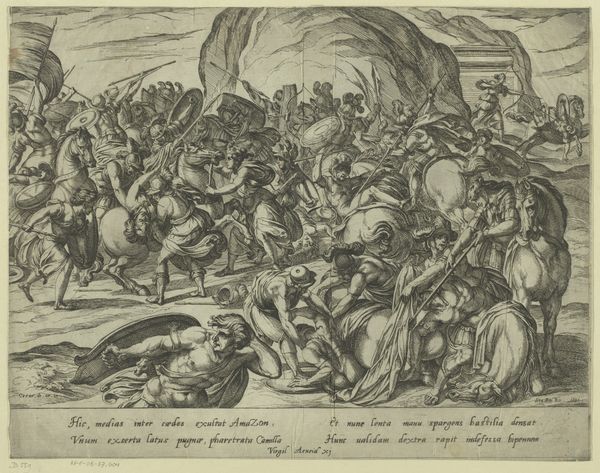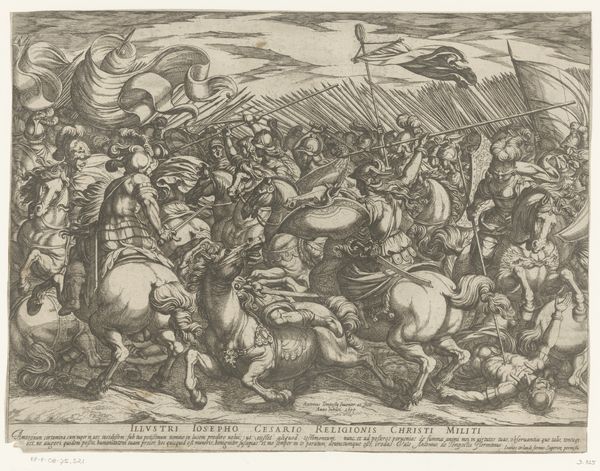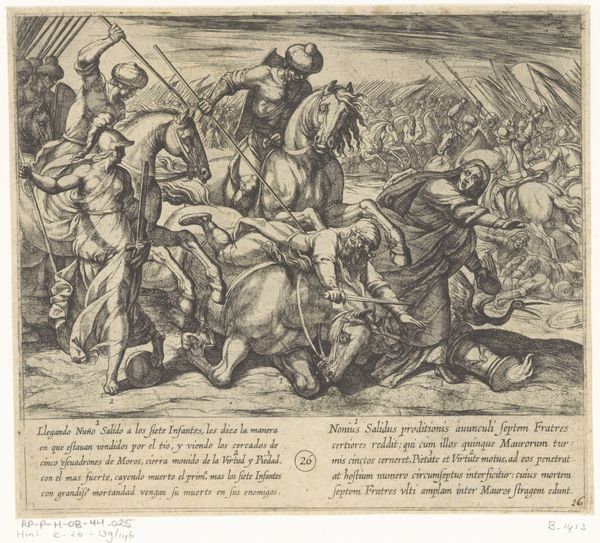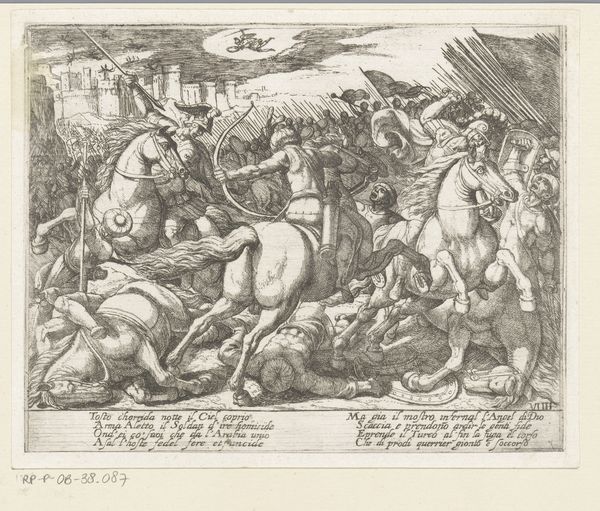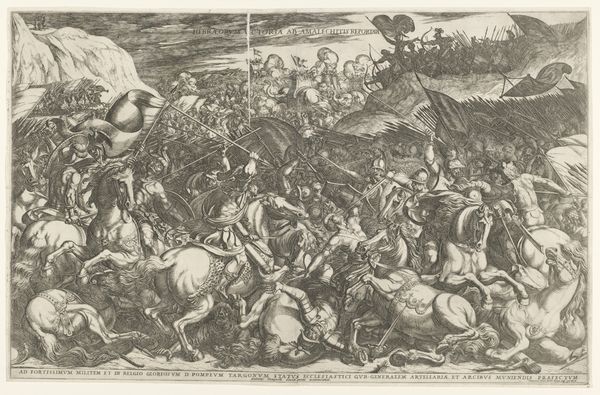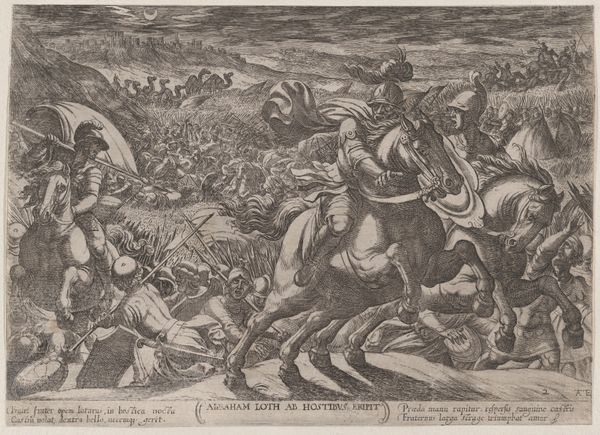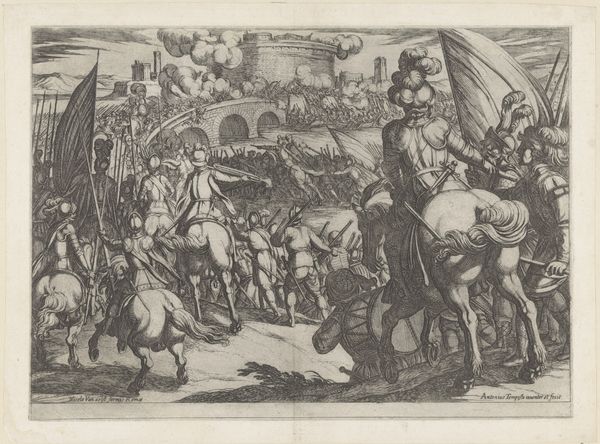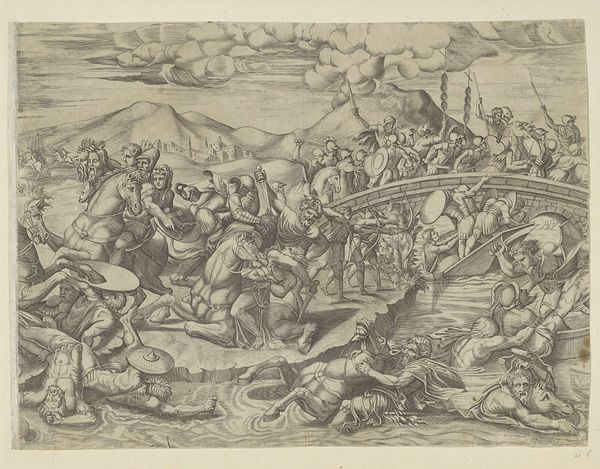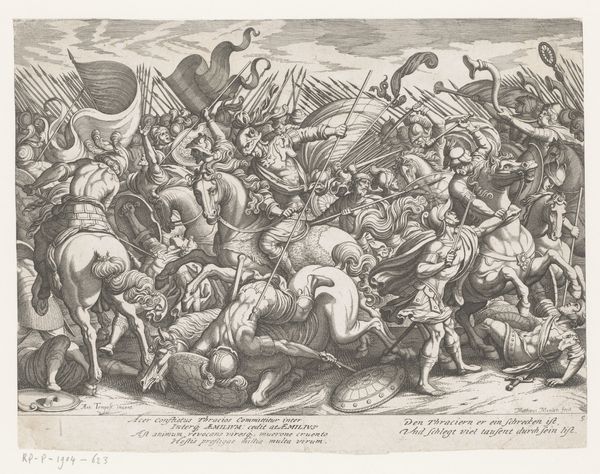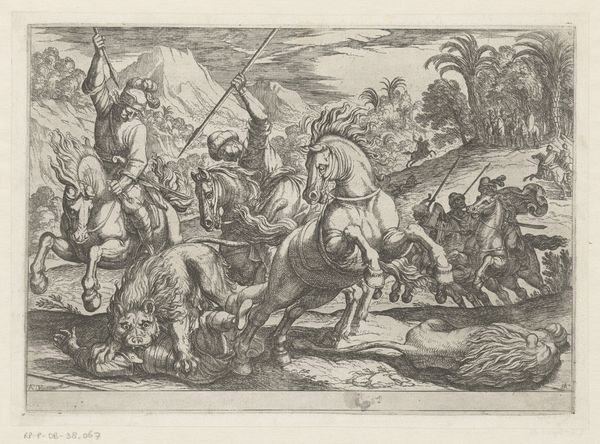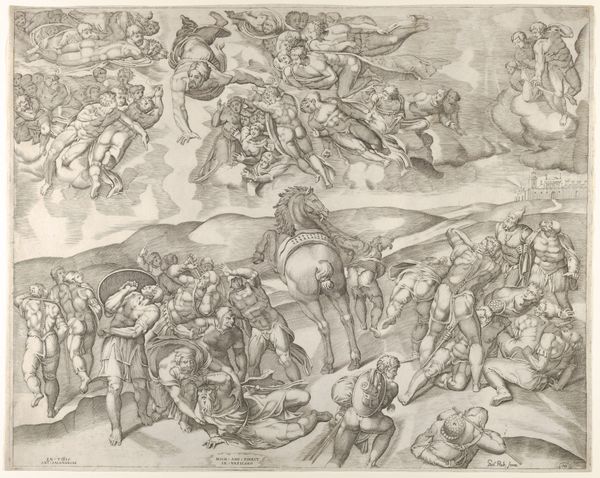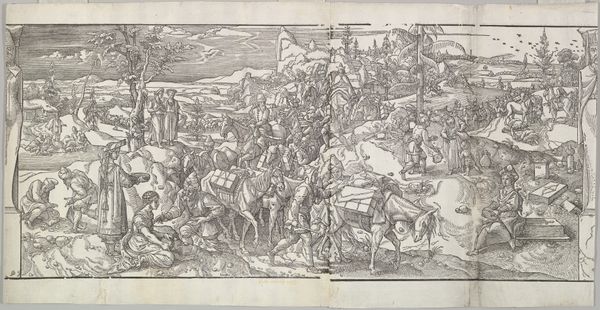
drawing, print, etching, pen, engraving
#
drawing
#
light pencil work
#
pen drawing
# print
#
pen sketch
#
etching
#
pencil sketch
#
mannerism
#
personal sketchbook
#
ink drawing experimentation
#
pen-ink sketch
#
pen work
#
sketchbook drawing
#
pen
#
history-painting
#
sketchbook art
#
engraving
Dimensions: height 330 mm, width 851 mm
Copyright: Rijks Museum: Open Domain
Antonio Tempesta made this print of the death of Camillus sometime before 1630, using etching and engraving techniques. These methods involve covering a metal plate with a waxy ground, scratching an image into it, and then using acid to bite the exposed lines. Engraving would then allow him to create finer details. The result is this incredibly intricate depiction of a chaotic battle scene. Prints like this were essentially a form of mass production. The etching and engraving process allowed for the creation of multiple identical images, making art more accessible to a wider audience. This had a profound impact on the consumption of art, as it became less of a unique, precious object and more of a reproducible commodity. So, when we look at this print, we're not just seeing a historical scene, but also the impact of early capitalism on artistic production. It’s a reminder that art is always embedded in the social and economic conditions of its time.
Comments
No comments
Be the first to comment and join the conversation on the ultimate creative platform.
